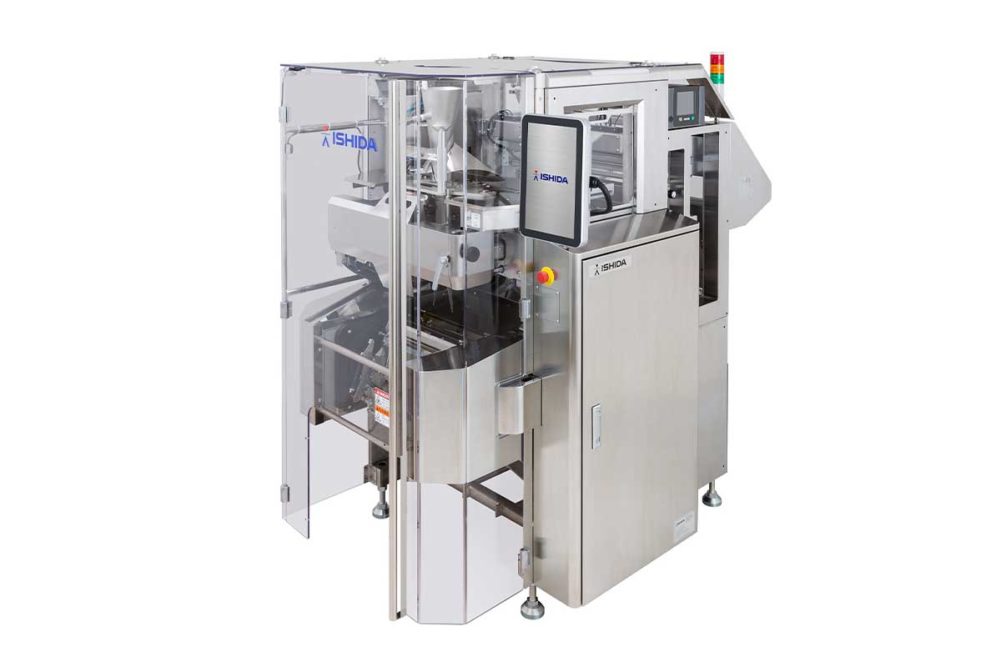As e-commerce grows, the packaging needs of bakers and snack makers are changing, according to a 2022 PMMI report, “The Future of Automation in Packaging and Processing.” Pack sizes are expected to shrink and take different formats because items are being shipped directly to consumers.
“Many times when it goes to the supermarket it needs to have a nice display. That’s maybe the No. 1 thing,” said Jorge Izquierdo, vice president of market development, PMMI. “Of course, it has to have a certain strength. The combination flips when it’s e-commerce. The way it looks is not as important. Sometimes in a supermarket it’s important because it’s how the consumer makes the decision. In the case of e-commerce, the decision has already been made. Yes, you want nice packaging consistent with your branding. You need packaging that’s more resilient and can handle all the shipping.”
Jason Hogue, southeast regional sales manager for BluePrint Automation, said the most promising packaging innovation — popular among both food producers and co-packers — involves large offline decoupled packaging systems for variety or standard packs.
“These were traditionally done at co-pack facilities with a large human labor force,” he said. “The system does not need to be tied directly to a wrapper or bagger. Products can be made and stored, then pulled out to make these specialty packs with minimal labor.”
Producers are clamoring for increased capacity for small bags, said Jeff Almond, industry manager, snack food packaging, Heat and Control.
“This lends itself to machines that can produce snacks at a high rate of speed in less space,” he said. “We are also working on solutions to handle those bags post packaging to improve operation efficiency where possible.”
The PMMI report stated that order fulfillment will become more complex as direct-to-consumer (D2C) orders rise.
“As the number of e-commerce and D2C orders continues to grow over the next five years, orders are likely to become more personalized, with the possibility of consumers, for example, choosing their own recipe ingredients or products in a variety pack,” according to the report. “New plants may need to be built with the e-commerce factor in mind and designed for end-to-end automation.”
Kimberly Kocer, product manager for Syntegon, said customers are adapting their packaging processes to accommodate the shift to e-commerce to ensure products are protected in transit to consumers.
“To meet these evolving packaging needs, our customers have focused on implementing agile and flexible packaging solutions that can handle diverse package sizes and formats, enabling quick changeovers and customization options,” she said.
Heat and Control’s customers are primarily focused on using existing technology more effectively and providing advanced training for staff in the wake of high turnover, Mr. Almond said. But versatility is also a priority.
“The rise of e-commerce has caused the need for additional flexibility in both packaging and automation,” he added. “We have been working with our customers to review existing assets and what may be needed in the future so that they can leverage e-commerce opportunities as they arise.”
Mr. Almond said the company has been focused on ease of operation and maintenance, predictive maintenance, training tools for a fluid workforce and better understanding customers’ needs.
The lack of workforce is so critical for some customers that they are investing in packaging equipment without being as concerned about the cost, said Stephane Vieira, technical sales representative for Niverplast.
Bakers and snack makers these days need not only versatility to meet changing needs but are also looking for labor saving automation that fits into limited space in their packaging departments.
“The flexibility offered by automated equipment allows them to effortlessly switch between different formats,” Ms. Kocer said. “By implementing automated packaging solutions, bakeries can maintain consistent output levels even with limited personnel. This not only enhances productivity but also improves operational stability. Additionally, the implementation of modified atmosphere packaging through automated packaging equipment has proven to be highly effective in reducing food waste.”
Unfortunately, flexibility and efficiency can be at odds with each other. Producers have to decide which of their priorities is more important.
“If you need to be able to run everything, then you’re going to have to choose to have more labor,” said Dennis Gunnell, president, Formost Fuji. “That doesn’t mean you might not be able to automate most of it or reduce head count, but if you want complete flexibility, you’re going to give up something else.”
Equipment manufacturers are also addressing the space restrictions by offering equipment that reliably handles jobs in small spaces. For instance, Rexfab has introduced its Mekitec X-ray system in North America.
“This compact X-ray inspection system combines superior X-ray sensitivity with a small footprint that adds it to any bakery’s packaging line,” said Bernardo Zermeno, customer development director for Rexfab.
This article is an excerpt from the August 2023 issue of Baking & Snack. To read the entire feature on Packaging Innovations, click here.






